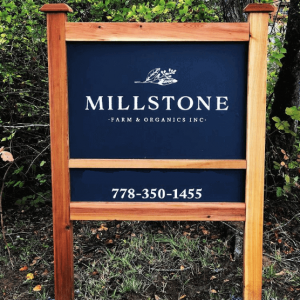Navigating the World of Gluten-Free Dining
 Writer, Mickie Quinn, was asked to share his experiences navigating the world of gluten-free dining. Celiacs everywhere will be able to relate!
Writer, Mickie Quinn, was asked to share his experiences navigating the world of gluten-free dining. Celiacs everywhere will be able to relate!
- Mickie Quinn, 14850 Dining 1
Picture it – it’s time for your weekly trek to the best taco spot in town with your work crew. It’s the only day you don’t have to pack your lunch. A day when you eat a little less breakfast because you know that in a few short hours a couple of delicious tacos will be made to order and served on a wax-paper covered tray in a few short minutes.
You walk up to the counter where they ask how many before you tell them what filling you want. You say two. Two tacos is all you need. You look at the sprinkle of cheese rain down from deft fingers and bubble as it hits the griddle moments before the corn tortillas are placed on top.
And then, millimeters away from my soon-to-be tacos, more piles of cheese are sprinkled onto the griddle and, much to my horror, BREAD is placed on top. Freshly cut rolls, airy, and with fluffy crumbs dangling of its edges just cut from the serrated knife. While that torta was no doubt going to be delicious, I had to relinquish my tacos to a co-worker.
- “Cross-contamination with would knock me out for three weeks. Yes, three weeks. It’s debilitating. The first week is filled with digestive issues (I will spare you the details). The migraines start a few days in, the kind that make light hurt and existing a massive challenge. But I do gain the superpower of being able to fall asleep anywhere, anytime, and in any position. The worst part of it all is the brain fog that takes over my being for around three weeks. The inability to think clearly or quickly — to remember — to being asked to maintain my daily demands when I can’t even remember where I put my glasses or what I was just doing or where I wrote down what I was supposed to be doing. Everything becomes harder. And because it’s a disease that no one can see, there is no patience or accommodations for when I’m affected.”
Back to handing over my tacos, it was no problem to find a willing recipient in my high-metabolism co-worker in his 20s. I quickly pivot to grab a hand pie from a couple doors down; they always have one GF selection available. Well, except for today.
And now I’m doubly sad the chicken place with the GF breading and dedicated fryer has closed. Where do I go from here, on foot, and with a very limited time window? I can’t even walk into places like Gorgers or Franco’s because of the flour in the air. Scanning my quick lunchtime options… well, I was out of them.
Even if I had the time for a leisurely meal, a walk down the Commons and Restaurant Row would reveal some restaurants that are only open for dinner. What’s open? More pizza. More sandwiches. I can’t have anything that comes out of 99% of the deep fryers, including tortilla chips at the Mexican restaurants.
Most restaurants tack on extra charges because of my order
- The burger joints charge me four extra dollars for a GF bun and to substitute the fries with a pile of lettuce and some shredded carrot so they can call it a salad.
- The bagel place adds $1.50 to substitute a plain Udi’s bagel to make it go from $3.85 to $5.35.
- It’s $2 extra for the glass noodles in the spicy Korean soup I love… which I also have to preface to make the soup itself gluten free by not adding soy sauce (I made that mistake once).
- Even ordering a gluten free pizza from a place I feel safe with will cost me twice as much for a smaller pie than what a large pizza full of gluten costs.
On the occasion that I am eating out, I am willing to pay extra charges if I know that I am going to be able to eat safely. Definitely worth the price to avoid those three hellish weeks. (But, do they really need to upcharge so much?)
Safety comes from assuring that the staff understand
- the effects of cross-contamination in the work area — changing gloves, using dedicated utensils, etc.
- knowing which common commercial items can hide gluten inside, such as salad dressings; commercial broths, stocks, and soups; soy sauce which appears in most Asian sauces;
- paper cups and straws made from wheat (yup, even my beverages have been ‘glutened’).
- Many restaurants list items as GF that Celiacs cannot eat — the better ones will acknowledge a shared fryer or non-dedicated workspace or that the customer must specify ‘gluten free’ when ordering.
Even cooking for myself (which I do for most meals) is more expensive
- A frozen pizza jumps from $3.99 to $6.79 (both Wegmans brand);
- a 20 oz. loaf of wheat bread is $2.99 compared to $6.99 for a frozen 18 oz. loaf (the cheapest option);
- a 16 oz. box of spaghetti is $.99 compared to $2.99 for the cheapest Wegman’s option (most other options average $3.29 for 8 oz… which would be $6.58 for the equivalent 16 oz.)
I hate being a pain in the ass just so I can eat. It’s exhausting. Deflating. And makes me hangry if I haven’t carefully planned out my time to either cook for myself or have the ability go someplace “safe.” It can make my mood swing drastically and negatively affect relationships, vacations, and put unnecessary stress on the people in my life. Shout out to my people who also take good care of me.
How to best prepare for dining out?
- I do my best to plan ahead and think through where I will be for each meal during the upcoming week.
- If I am going someplace new I will scour the menu in advance, call the restaurant during quiet hours, and talk with someone who can walk me through safe choices so that I am not taking up time during the dinner rush grilling the poor server with all of my questions.
- If someone is cooking me dinner for the first time, I get a list of every ingredient they are using because of the hidden gluten in many ingredients and are labeled “modified food starch” or “natural flavors.”
Mickie goes on to mention some of his favourite spots in the Ithaca area that not only make him feel safe, but make delicious food! See his recommendations here!
What they do right!
- use glass noodles and no soy sauce
- breakfast sandwiches that can be carefully assembled on gluten free bread
staff listen and take seriously issues of cross-contamination in their prep area - always ask “allergy or preference” and cook the patties in a separate pan on top of the griddle.
- dedicated gluten-free fryers
- many restaurants only have one GF option at a time, but gosh it’s good
- pita without the pita – delicious meat on top of a Greek salad
- if the owner is Celiac, can train staff to treat those orders carefully.
separate section for gluten free and vegan items on the menu - when many items are naturally GF as as long as they don’t go in the fryer
- when many protein + vegetable options are gluten free
- when staff say that, “there is no hidden gluten” in any of their items. They get it.
- when restaurants take the time and effort to create a Celiac-friendly menu
- great salads with tasty meat + vegetable options
- non-fried, corn-tortilla wraps
Best of all are restaurants where EVERYTHING IS GLUTEN FREE!
For more, follow 14850 Dining on Instagram, Facebook, and Twitter, or subscribe to the 14850 Magazine Daily newsletter. Listen weekly on WVBR or in the 14850 Dining Podcast!













